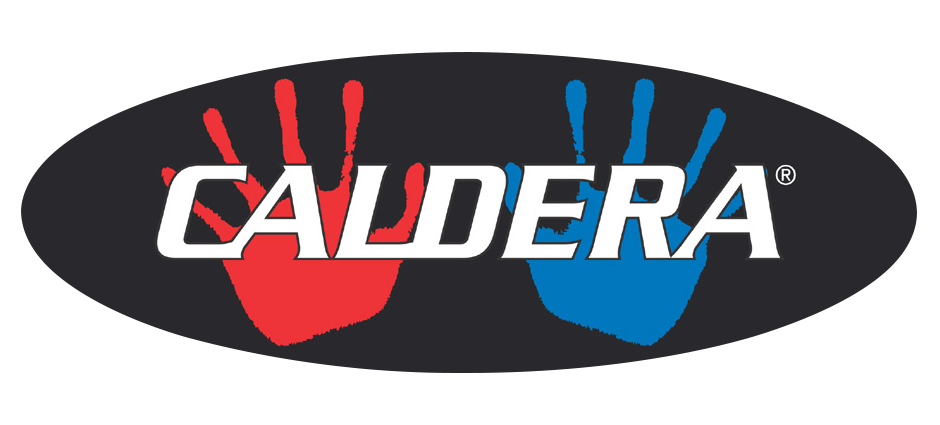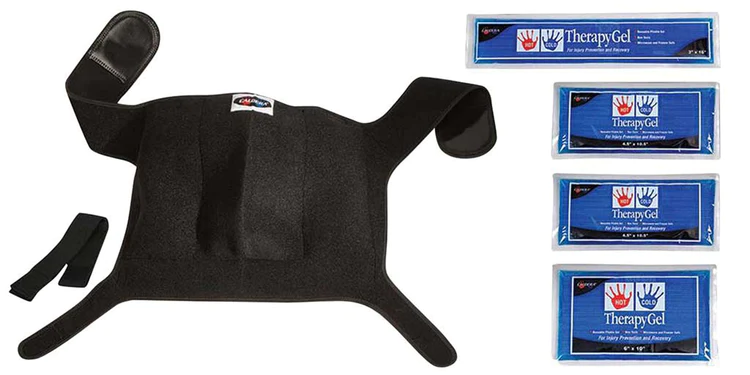Keep Moving
Sections: Cold Therapy Heat Therapy R.I.C.E. 
Cold Therapy
Why cold?
Cold (or iced) therapy is one of the simplest, safest, and most effective self-care techniques for post workout therapy or to treat pain or discomfort in muscles and joints. Cold will decrease muscle spasms, pain, and inflammation of bone and soft tissue. You can use cold initially on the site of discomfort, pain, or injury. You can also apply cold in later stages for rehabilitating injuries or easing chronic problems.
Four stages of cold therapy
When you apply cold therapy, you’ll feel four distinct sensations. Immediately after applying, you’ll feel the cold, then you’ll feel a burning/prickling sensation in the iced area. Next, you’ll feel an aching, which can sometimes hurt more than the initial pain. Eventually, and most importantly, the iced area will feel numb. As soon as you feel numbness, remove the cold therapy. You should apply cold therapy for not longer than 20 to 30 minutes at a time. Before you reapply cold therapy, let your skin return to a normal temperature or back to the aching feeling.
How does cold therapy work?
Cold initially constricts local blood vessels and decreases tissue temperature. This decreases blood flow and cell metabolism, which can limit hemorrhage and cell death in an acute traumatic injury. After about 20 minutes of cold therapy, blood vessels in the injured area slowly dilate (open), increasing the tissue temperature.
When should you use cold therapy?
For the greatest benefit, use cold therapy after exercise, not before. Studies have shown that cooling a body part prior to athletic performance is probably not a good idea, as the cold may alter joint position, increasing risk of injury.
To most effectively use cold therapy, apply a cold or frozen Caldera Gel Pack to the problem area. You can hold it in place with a Caldera Therapy Wrap.
Can I use cold therapy as a precaution?
You can use a chilled or frozen Caldera Gel Pack immediately following any workout, or when you feel any discomfort or injury. If the swelling or pain doesn’t decrease within 24 to 48 hours, you should consult your doctor.
Is cold therapy safe?
Cold therapy is very safe when used within the recommended application time. Don’t apply cold therapy if you have any of the following conditions: rheumatoid arthritis, Reynaud’s Syndrome, allergies, paralysis, or areas of impaired sensation (nerve damage).
back to top
Heat Therapy
Why heat?
Heat therapy opens blood vessels and increases blood flow, which helps deliver oxygen and nutrients to muscles and tissues. It also relaxes the muscles and helps reduce pain in the affected area.
Heat therapy is generally applied as a Caldera Gel Pack, a compress like a Caldera Therapy Wrap, a sauna, a shower or a bath. When you use heat therapy, always exercise caution and make sure the temperature is comfortable. Don’t use heat therapy over open wounds or stitches or if you have poor circulation. Heat treatment should not last more than thirty minutes.
Benefits of heat therapy for lower back pain:
While warmth and heat have long been associated with comfort and relaxation, heat therapy can also provide pain relief and healing benefits for many types of lower back pain.
And heat therapy offers several other significant benefits—it’s inexpensive and can be done at home while relaxing. Caldera’s Therapy Wraps even make it possible to apply heat therapy while in the car or at work.
How heat therapy works:
Lower back pain due to strains and over-exertion creates tension in the muscles and soft tissues around the lower spine. This restricts proper circulation and sends pain signals to the brain. Muscle spasm in the lower back can create sensations ranging from mild discomfort to excruciating pain. Heat therapy can help relieve pain from the muscle spasm and related tightness in the lower back.
Applying heat therapy can help provide lower back pain relief in several ways:
- it dilates blood vessels of the muscles surrounding the lumbar spine. This increases the flow of oxygen and nutrients to the muscles, helping heal the damaged tissue;
- it stimulates the sensory receptors in the skin, so applying heat to the lower back will decrease transmission of pain signals to the brain and partially relieve discomfort; and,
- it helps stretch the soft tissues around the spine, including muscles, connective tissue and adhesions. Consequently, there will be a decrease in stiffness and injury, and an increase in flexibility and overall feeling of comfort. Flexibility is very important for a healthy back.
For many people, heat therapy works best when combined with other treatments like physical therapy and exercise.
back to top
R.I.C.E
Exercise is good for your health, but can also raise your risk of sprained joints and muscles and other minor injuries. You can reduce your recovery time if you care for injuries in the first day or two after an injury happens. If you suffer a strain, sprain, pull, tear or other muscle or joint injury, treat it with the R.I.C.E. method: Rest, Ice, Compression and Elevation. This routine can relieve pain, limit swelling, protect the injured tissue, and will help speed healing.
The R.I.C.E. method for acute injury treatment includes:
- REST—it's important to rest after injury for two reasons. First, rest is vital to protect the injured muscle, tendon, ligament or other tissue from further injury. Second, the rest will help your body have the energy it needs to heal itself most effectively.
- ICE—use frozen or cold Caldera Gel Packs on the injured area. The cold can provide short-term pain relief, and limits swelling by reducing blood flow to the injured area. Apply the cold Gel Pack for 20 minutes and then take it off for 20 minutes. Repeat as necessary.
- COMPRESSION—use a Caldera Therapy Wrap to compress the injured area. This can provide relief from pain. If you feel throbbing or if the wrap feels too tight, loosen the wrap.
- ELEVATION—elevate the injured area to help reduce swelling. Raise the injured area above the heart for maximum effectiveness. For example, if you injure an ankle, try lying on your bed with your foot propped on one or two pillows.
After a day or two of R.I.C.E., many sprains, strains or other injuries will begin to heal. However, if your pain or swelling doesn't decrease after 48 hours see your doctor or go to an emergency room if the symptoms are very severe.
Once your injury starts healing, you can lightly massage the area to cut the healing time, and potentially reduce scarring and the possibility the injury will happen again. Once the swelling is gone, you can also begin gentle stretching of the area. Try to work the entire range of motion of the injured joint or muscle, but don't force a stretch-you'll risk reinjures. Keep in mind that a stretch should never cause pain. Also, at this point you may want to apply heat to the area-simply heat up and apply your Caldera Gel Pack. Finally, after the injury has fully healed, you can begin strengthening exercises. Start with easy weights and don't continue if you feel pain.
back to top
